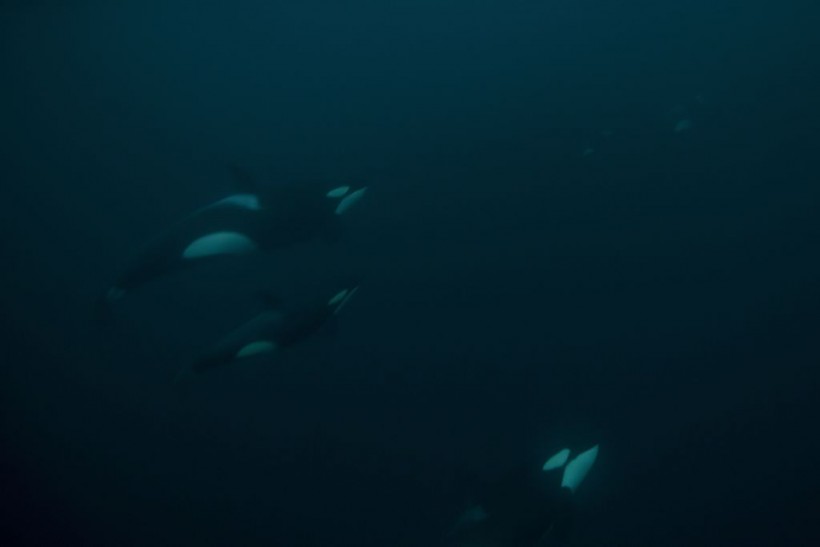Killer whales are the most vicious animals on the planet. Their species reign under the depths of the ocean, where they consume most of the favorite meats from sea lions and the great white sharks. In a recent report, orcas were discovered to have a new victim, and it was not just some random aquatic swimmer.
Killer Whales vs. Blue Whales

A killer whale (orca) is pictured in the fjord of Skjervoy, northern Norway, on November 26, 2021. - Between October and February, Orcas and Humpback whales hunt Atlantic herrings to build their stock of protein. The water temperature is +5C; the air temperature is -10C.
Experts were stunned to have the first-ever sighting of the killer whales attacking the largest living creatures on our planet, known as blue whales.
Because of the rare event, experts conducted a study that dissects how the marine animals ended up in the situation. According to the study, there are not just one but three incidents of the attacks. The gruesome phenomenon was captured off the coast of Bremer Bay in Western Australia.
Oregon State University's Marine Mammal Institute expert and co-author of the study Robert Pitman said in a report by the National Geographic that what their team witnessed was the 'biggest predation event' on Earth. The rare encounter included what the scientific community considers the largest apex predator and the largest prey of all time.
The first attack of orcas was recorded last March 2019. The authors said that the imaging presented the appearance of 12 to 14 killer whales as they surrounded a blue whale. According to an EcoWatch report, the experts said that the size of the gigantic mammal scales up 59 to 72 feet in length.
When the hunting group was analyzed, it was found that there were eight adult females, two young members, one adult male, and one subadult male. According to the study, the killer whales initiated the first attack. The activity agitated the blue whale leading to the loss of its energy. The large mammal slowed down and started to swim in a circular pattern.
After a few minutes, three of the adult female orcas formed perpendicular to the large body of the blue whale and started ramming to the flanks. With force, the killer whales could push the blue whale through the waters and submerge it back deeper into the ocean.
While the flank attack was commencing, two killer whales subsequently attacked the head of the mammal. This caused the blue whale to stop moving. The blue whale was still alive at the moment, but an adult female killer whale entered the head of the giant and began consuming its tongue. Right after the mammal died, approximately 50 orcas joined the feast, chomping off many parts of the carcass.
ALSO READ: Domesticated Cats Have Smaller Brain Size Compared to Ancient Ancestors
Female Orca Leaders and the Return of Biodiversity and Marine Ecosystem
The second attack was recorded last April 2019. Twenty-five orcas carried out the same strategy to a blue whale that measured around 10 to 12 meters. The last incident was captured on March 2021, with 12 killer whales chasing a juvenile blue whale in 97 minutes. The finishing move of the orcas was similar to the first incident.
Previous studies thought males lead that killer whale attacks. This is contrary to the observations from the new investigation. Pitman explained that what the world witnesses is the ocean before people almost wiped out the blue whale species.
Today, large mammals are still in their recovery stage from being endangered. Their numbers significantly grew over decades of preservation efforts. Pitman said that if the giant whales continue to grow their population, we may have a better chance to encounter and observe how the normal oceanic environment with abundant biodiversity works. The study was published in the journal Marine Mammal Science, titled "The first three records of killer whales (Orcinus orca) killing and eating blue whales (Balaenoptera musculus)."
RELATED ARTICLE: European Migratory Songbirds Navigate with Magnetic Stop Signs
Check out more news and information on Animals in Science Times.














